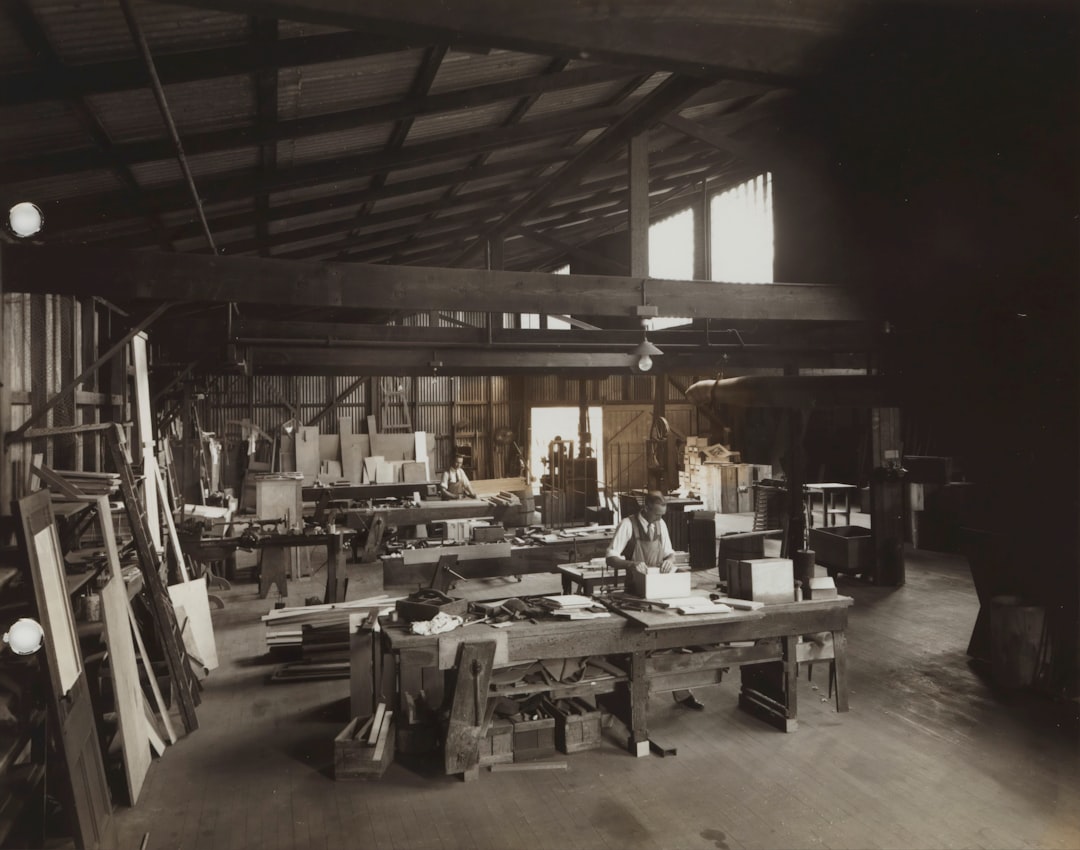

Engage prospects with a scan and streamline customer engagement with FREE QR code marketing tools by Sona – no strings attached!
Create a Free QR CodeFree consultation

No commitment

Engage prospects with a scan and streamline customer engagement with FREE QR code marketing tools by Sona – no strings attached!
Create a Free QR CodeFree consultation

No commitment
In today’s digitally driven world, QR codes have evolved from a novelty to a strategic powerhouse for bridging offline engagement with online action. For carpentry businesses, QR codes represent a frictionless and highly effective method to elevate customer education, accelerate lead capture, and differentiate through seamless service, all without app downloads or complex onboarding. When a prospective client encounters your workmanship in the real world, a well-placed QR code turns that moment of curiosity into measurable engagement.
As carpentry services and construction benefits strive to stand out in a competitive market, modernizing the customer journey is essential. QR codes address new pain points such as leads slipping through the cracks because they are not captured in your traditional system or missing key client feedback when it is most valuable. They make discovery, education, and conversion both immediate and trackable.
This guide provides actionable strategies for growth-minded carpentry professionals and decision-makers. Learn how QR codes drive business outcomes by solving hidden inefficiencies, supporting carpentry business growth strategies, and positioning your services for measurable marketing success, whether that means faster lead follow-up, more granular engagement analytics, or a stronger, data-informed customer journey.

Busy carpentry teams often struggle to deliver education or support at scale, especially when relying on paper materials or one-off verbal explanations that rarely get tracked. QR codes bridge the gap between tangible craftsmanship and real-world digital content, making it simple to deliver education and capture leads at every customer touchpoint. They reduce missed engagement opportunities and ensure that even anonymous or untracked prospects are given a clear digital path. Replace manual handouts and ad hoc walk-throughs with always-current digital hubs, connected to scan data you can measure and act on.
Think about the most common client questions: which materials to choose, how to maintain new cabinetry, what a project timeline looks like, or how to request a change order. Rather than repeating answers and hoping clients remember, you can place QR codes on brochures, sample boards, invoices, and site signage that direct customers to videos, maintenance guides, or interactive FAQs. Each scan becomes a learning moment that also signals interest, readiness, and potential next steps for your sales team.
Modern platforms like Sona QR let you launch, track, and optimize these actions without complex setup. You can A/B test landing pages, update content on the fly, and route scans by location or campaign to the correct team member. The result is a scalable educational engine tied directly to pipeline and client satisfaction.

One persistent headache for carpentry businesses is the lack of insight into who engages with your offline marketing or on-site materials. High-intent prospects often go unnoticed, and anonymous browsers slip by untracked. QR codes directly address these challenges by transforming every physical touchpoint into a measurable moment of engagement that you can attribute back to real outcomes.
In carpentry, many crucial experiences are physical: a client examines a sample door in your showroom, sees your truck on a busy street, or watches your crew finish trim work at a nearby site. QR codes convert those moments into opportunities to collect first-party data, deliver timely information, and move customers closer to a decision. They are fast, familiar, and effortless for clients, which means more scans, more signals, and more chances to convert before competitors do. For scan tracking and attribution capabilities, see Sona QR’s product overview and for campaign ideas, this QR marketing guide is helpful.
Bridging these gaps converts more offline engagement into actionable revenue while reducing the impact of lost or delayed follow-up. For carpenters who rely on reputation and word of mouth, QR codes add the measurement and automation you need to turn interest into outcomes.

Carpentry companies often experience fragmented data when relying on generic formats or outdated analytics. QR codes offer a flexible toolkit that matches the way carpenters market, sell, and support clients. By selecting the right QR format for each job, you streamline the client experience and improve data quality for your team.
Not all QR codes serve the same purpose. A QR code on a business card should help a prospect save your contact information instantly, while a code on an installation checklist should link to care instructions and service booking. Choosing the correct format ensures each scan delivers exactly what the user expects, which improves conversion rates and repeat engagement.
Dynamic QR codes are ideal for carpentry because services, pricing, and projects evolve. With a dynamic code, you can update destinations, change offers, and segment traffic by channel or location without reprinting. Static codes are best reserved for long-lived destinations like an evergreen portfolio or contact page.
Without visibility into where leads engage most, carpentry businesses risk focusing budget on underperforming channels. Strategic QR placement gives you a data-driven view of your best opportunities so you can double down on what works and cut what does not. Start with your highest-traffic physical assets, then expand as data shows where interest is strongest.
Look across your customer journey to identify chokepoints. If you often meet prospects at job sites or through referrals, place QR codes where curiosity peaks. If you host a showroom, use QR codes to capture preferences as people browse. Every placement should serve a purpose: educate, capture, or convert.
As scan data accumulates, you will see which placements drive meaningful action. Integrated analytics surface where to invest further and where to pivot, helping your team allocate budget with confidence.

Carpentry buyers evaluate you based on craftsmanship, clarity, and credibility. QR codes can enhance each of these factors while making your pipeline more predictable. The following use cases align to common interactions across residential and commercial carpentry, including custom cabinetry, millwork, framing, and finish carpentry.
Begin with high-intent touchpoints and expand to top-of-funnel placements once you have a conversion engine in place. Each use case should contain a clear CTA and a tight, mobile-friendly destination that answers a specific question or moves the client to the next step.
By mapping use cases to buyer intent, you help prospects self-educate and signal exactly where they are in the process. This improves your win rate while reducing cost per lead.
Often, prospects who interact with your business offline do not get captured in your CRM, which leads to missed opportunities and hard-to-measure marketing. Each QR code scan is a first-party signal that can be tied to a physical context. When you deploy unique codes across touchpoints, you can segment your audience automatically, then retarget with messaging that matches their stage and interest.
For carpentry, consider segmenting by role and intent. Homeowners who scanned a maintenance guide should receive seasonal care tips and upgrade offers. General contractors who scanned a certifications page might get project capability summaries and lead times. Architects who scanned a portfolio can receive CAD library links and material data sheets.
With Sona QR, each code becomes a smart entry point into your funnel. You can set tags and routing rules at the code level, then pass enriched data into your CRM and ad accounts automatically. This makes retargeting based on actual behavior, not assumptions, a reality for carpentry teams. For tactics on segmentation and ads, see Sona’s Playbook on intent-driven retargeting.
QR codes are more than convenient links. They connect offline and online campaigns, enabling real-time engagement and deeper measurement across every channel you use. The key is to manage QR codes centrally so you can see how placements interact and which combinations move prospects to conversion.
Carpentry marketing relies on print collateral, on-site presence, and community visibility. Layer QR codes into these channels with clear, benefit-oriented CTAs. Use unique codes for each medium and message so you can compare performance and refine creative, offers, and placements.
QR codes serve as the offline onramp to your digital marketing engine. With a central platform like Sona QR, you can manage all codes in one place, monitor performance, and sync scan data with your CRM and ad platforms. This eliminates guesswork and allows dynamic optimization while campaigns are live.
Executing QR campaigns with discipline ensures you get results quickly without wasted effort. Start by aligning your first campaign to a specific blocker in your business, then design and deploy codes with tracking in mind. Review data weekly for the first month and iterate based on what you learn.
Below is a simple framework you can use to concept, launch, and optimize QR-driven initiatives in carpentry. Each step includes practical actions and carpentry-specific examples you can adapt to your shop or field operations.
Clarify the business outcome you want so your QR code serves a clear purpose. For example, you may want to prevent lost reviews after job completion or eliminate slow callbacks from trade show follow-ups. Decide on one outcome per code so the CTA is unambiguous.
Your destination and need for flexibility dictate whether to use static or dynamic QR codes. Many carpentry use cases benefit from dynamic codes because they evolve as projects change.
Scannability and clarity drive conversion. Design the code and CTA for the physical environment where it will live. What works on a vehicle wrap may not work on a glossy brochure.
Place QR codes where missed engagement matters most and where scanning is physically feasible. Attach a unique code to each channel so you can compare performance.
Review data frequently during the first weeks so you can spot drop-off points and adjust offers or placements. Small design changes often yield measurable lift.
A concise rollout with tight feedback loops lets you achieve wins quickly, which motivates teams to promote scanning consistently. As you scale, standardize your best placements and messages so every crew member knows what to use and where.
Traditional approaches often leave carpentry teams guessing about which marketing activities actually drive revenue, especially when many leads originate offline and remain anonymous. QR-driven analytics make it possible to connect scans to outcomes. You can attribute leads and deals to the correct assets, then adapt creative and placement based on measurable impact rather than intuition.
Knowing someone scanned a code is helpful, but it is not enough. You need to understand whether the scan led to a form fill, sales conversation, or conversion. That requires linking scan data to downstream events in your CRM and tying those events to revenue. With a unified system, you will see how QR engagement influences pipeline and where prospects fall out of the journey.
Sona QR captures real-world engagement, and Sona.com extends that data to identity resolution and multi-touch attribution. Together they help you connect scans to revenue and make QR codes a measurable component of your performance marketing strategy.
Expanding QR impact requires a combination of disciplined tracking, team enablement, and creative deployment. Focus on the media you use most and the actions that produce the greatest lift in pipeline and customer satisfaction.
Select the practices below that fit your workflow, then codify them into a simple playbook so every project manager and installer can deploy codes consistently.
You can generate and track your first QR codes for free with Sona QR. Start creating QR codes for free, connect your CRM, and launch your first campaign in minutes.

Real projects show how simple QR deployments can unlock measurable results. The most successful teams select a single outcome, design for the environment, and connect scans to tight follow-up workflows. They treat QR codes as an extension of service quality and communication, not just as a novelty.
Use the ideas below to inspire your first campaign or to refine existing tactics. For design inspiration, explore QR business cards and creative uses like laser-cut QR codes. Start where the friction is highest and the payoff is immediate, such as review capture at handoff or estimate intake at shows.
These examples confirm that QR codes can elevate brand credibility, streamline communication, and improve measurement. They help you harmonize physical service delivery with digital marketing success.
QR codes work best when they are easy to scan, paired with a clear promise, and routed to a mobile-optimized destination. The following expert tips and pitfalls reflect lessons from field deployments across carpentry and related trades. Applying them will sharpen your execution and prevent common failures.
Dedicate ownership within your team so someone is accountable for deployment and optimization. Even modest weekly reviews will keep campaigns aligned with business goals and changing conditions.
Neglecting design, messaging, or measurement can limit campaign impact through poor targeting, siloed data, or slow adaptation. A disciplined, iterative approach keeps carpentry marketing responsive, credible, and tied to outcomes that matter.
QR codes are more than a shortcut; they are a scalable strategy for carpentry businesses seeking to modernize customer engagement and drive growth. By turning construction materials, tools, van wraps, and brochures into interactive assets, carpentry professionals can meet clients where they are and move them toward action in seconds. Done well, QR programs feel like an extension of your craftsmanship: clean, precise, and reliable.
Here is what a well-executed QR strategy delivers for carpentry teams:
With Sona QR, you have everything needed to capture demand at the source and convert it into measurable results. Start with one high-impact use case such as review capture at handoff or estimate intake at a home show. Launch, learn, and scale from there. In a market that rewards clarity and speed, QR codes help your craftsmanship shine while your operations become smarter, faster, and more profitable.
QR codes have revolutionized carpentry businesses by transforming traditional customer education into interactive, measurable engagement. Whether it’s showcasing detailed project walkthroughs, providing instant access to maintenance tips, or sharing personalized design ideas, QR codes elevate the customer experience and build trust through instant, mobile-friendly content. Imagine empowering your clients to explore your craftsmanship and services anytime, anywhere—with just a quick scan.
With Sona QR, you can create dynamic, trackable QR codes tailored specifically for your carpentry business. Update your educational content on the fly without costly reprints, monitor which materials resonate most with customers, and directly link scans to increased inquiries and sales. No more guesswork—just actionable insights that drive growth and customer loyalty.
Start for free with Sona QR today and turn every scan into an opportunity to educate, engage, and expand your carpentry business.
Carpentry businesses can place QR codes on brochures, sample boards, invoices, site signage, business cards, and job site boards to direct customers to digital content such as portfolios, maintenance guides, quote forms, and review requests, turning real-world curiosity into measurable digital engagement.
Incorporating QR codes helps carpentry businesses modernize the customer journey, capture leads effectively, deliver timely information, track engagement, reduce costs on printed materials, and convert offline interest into actionable revenue with measurable marketing success.
QR codes transform physical touchpoints into trackable moments by logging scan data including time, location, and campaign source, enabling businesses to identify high-performing placements, attribute leads accurately, sync with CRMs, and optimize marketing efforts based on real customer behavior.
Carpentry businesses can use QR codes on business cards to let prospects save accurate contact details instantly, link to digital portfolios or estimate request forms, and provide clear CTAs that encourage immediate engagement without manual data entry errors.
By placing QR codes on showroom displays, sample boards, and site signage that link to categorized project galleries, carpentry businesses allow prospects to view relevant work instantly and request quotes, accelerating the sales process and enhancing credibility.
Use Sona QR's trackable codes to improve customer acquisition and engagement today.
Create Your FREE Trackable QR Code in SecondsJoin results-focused teams combining Sona Platform automation with advanced Google Ads strategies to scale lead generation

Connect your existing CRM

Free Account Enrichment

No setup fees
No commitment required

Free consultation

Get a custom Google Ads roadmap for your business






Launch campaigns that generate qualified leads in 30 days or less.
